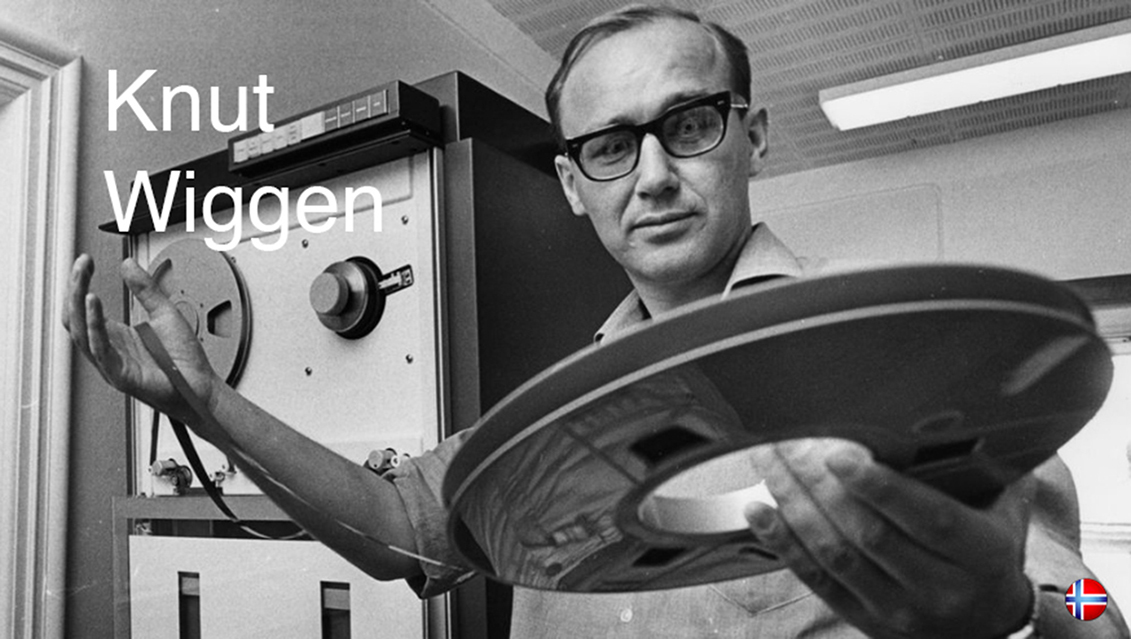The Art and Technology-conference
In 1959 the British engineer and author C.P. Snow wrote the book The Two Cultures. Snow's thoughts gained popularity in Stockholm during the 1960's and were the source of a movement that went by the name of Art and Technology. Snow's main idea was that the breach of communication between the scientific and the humanistic disciplines could prevent the world from solving its problems. For Knut Wiggen, who at the time was Chairman of Fylkingen and later to become leader for the Swedish Radio's electronic music studio (EMS), this idea was interesting.
The first practical initiative taken was a collaboration between Fylkingen and the National Museum of Science and Technology in Stockholm. Together they arranged an exhibit showing some of the museum's earlier attempts at uniting these two seemingly incompatible areas. The goal was to investigate which of all possible "emotions, needs and evaluations" could be found, and which artistic modes of expression were being affected by the quickly escalating electronic technology. The exhibit, 'Visions of the Present', opened for the public on September 19-25, 1966 at Teknorama.
Fylkingen's 'Theory group' - with scientific theorist Carl Lesche at the helm - was responsible for the necessary theoretical work. In 'Fylkingen International Bulletin 1, 1967' Lesche wrote about world view, science, technology and art, and Sven Fagerberg wrote an article full of prophetic insights about future society. Yona Friedman and Oskar Hansen wrote and spoke about architecture, and Anthony Hill about the use of technology in the visual arts.
The festival was started with a preliminary appeal signed by fourteen of Sweden's most prominent scientists. The appeal was published on the front page of the newspaper 'Dagens Nyheter', and promoted the idea that close contact between the sciences and the arts was necessary to counter alienation and allow the arts to participate in the social development otherwise dominated by technology. The developing view of the world needed to include humanistic perspectives from the arts.
Knut Wiggen contacted Stockholm-friendly John Cage and Robert Rauschenberg, who in turn brought in engineer Billy Klüver who normally helped artists when technical problems arose. Fylkingen and the group of New York artists agreed to arrange a collaborative performance during the festival, but a succession of economical and technical problems prevented this performance to take place. The US artists normally raised private funding for events, while Fylkingen relied on public funds, and this posed timing problems, and the US artists had decided to use radio communication between the performing groups of artists, and unfortunately their radio equipment used the same frequency as the Stockholm international airport. The Swedish police did not allow the arrangement for this reason, and Fylkingen had to relinquish its deeply wanted visit from the artistic version of C.P. Snow's 'Art and Technology'. The absence of this performance affected Fylkingen's exhibit at the National Museum of Science and Technology in particular.
Wiggen had visited the Swedish Ministry of Foreign Affairs while attempting to raise funds for 'Visions of the Present' and had inspired it to present the idea to UNESCO. Five years later, Wiggen received a telephone call from the Ministry, and UNESCO had approved the idea. During the negotiations, it became clear that UNESCO had its own vision of the original idea, and the planned meeting for Visioner av nuet became the 'Music and Technology’-meeting, held 8-12 June, 1970, gathering an impressive roster of electroacoustic and early computer music luminaries.
- Carol van Nyus, 2018
Litt: Proceedings from the UNESCO Conference Music and Technology. Paris, La Revue Musicale, 1971.
